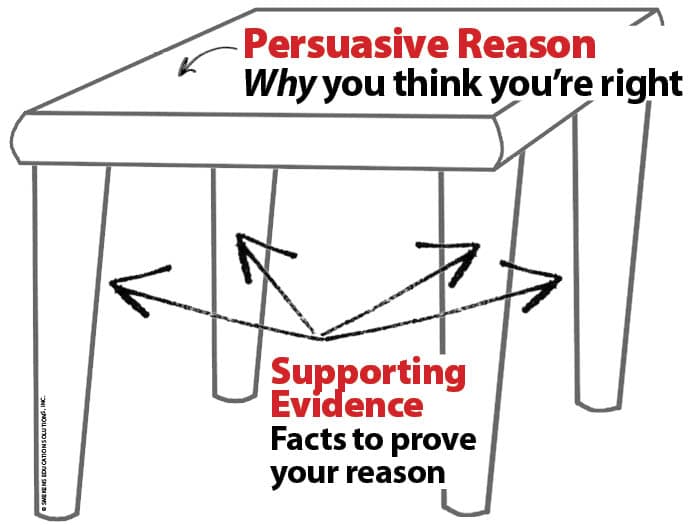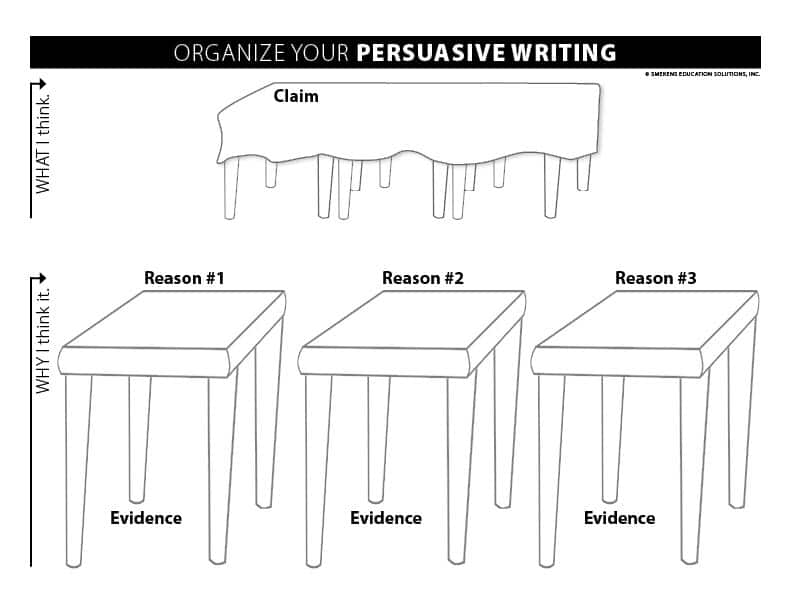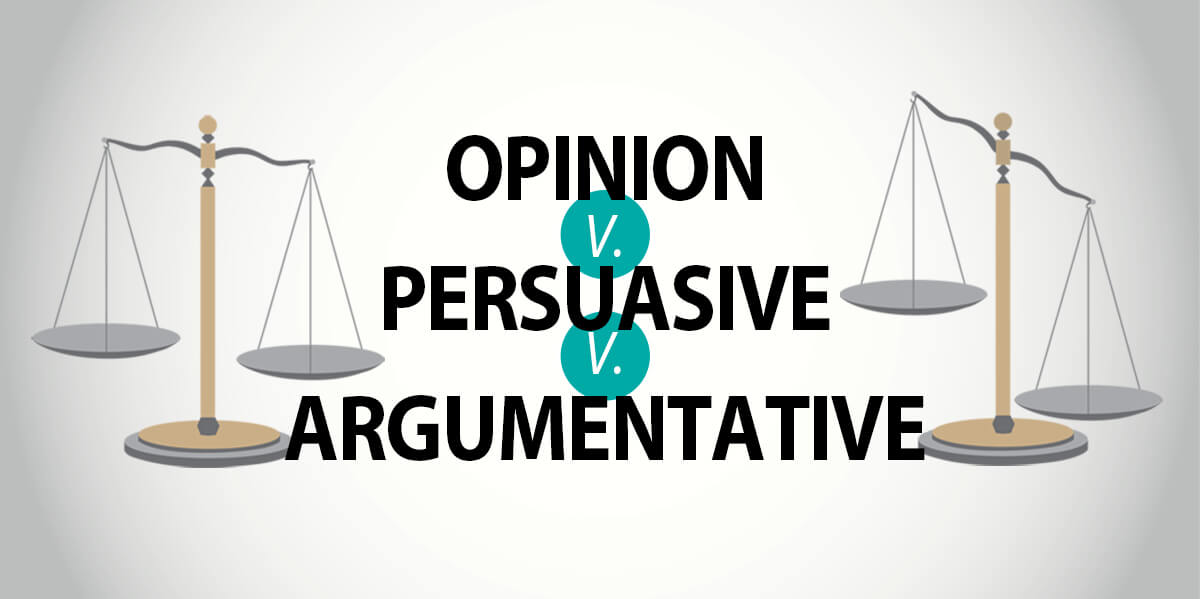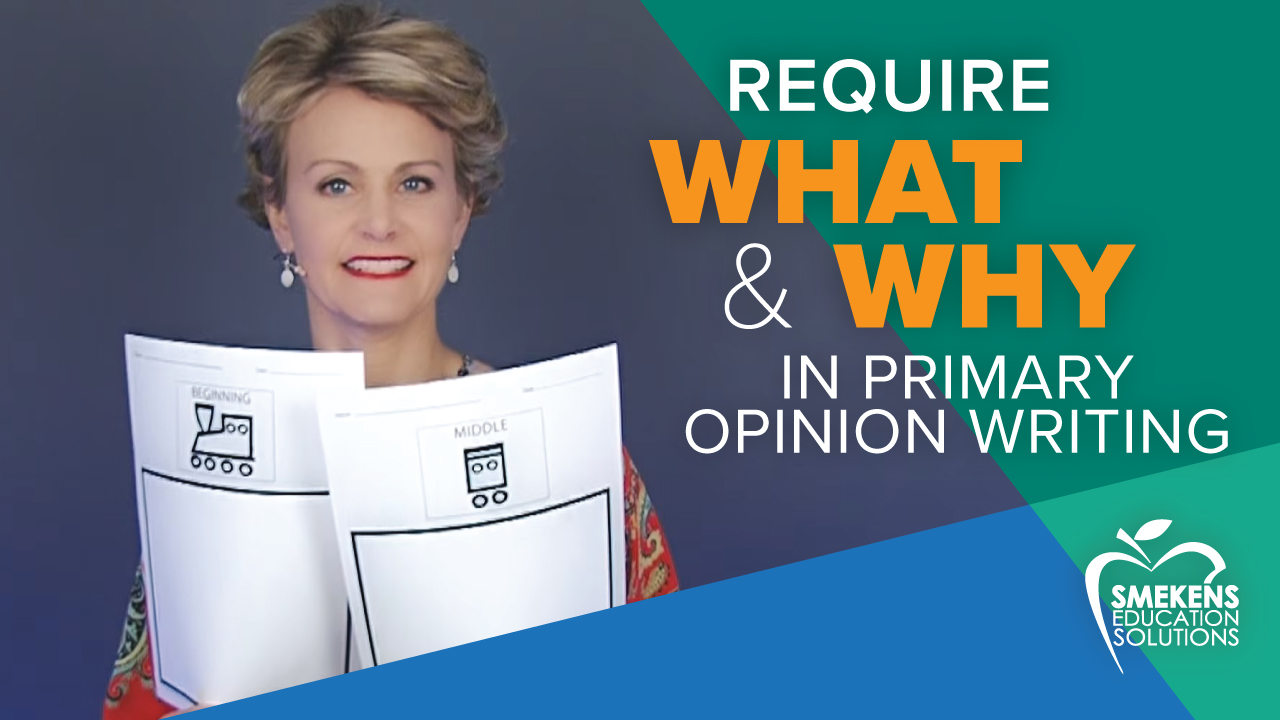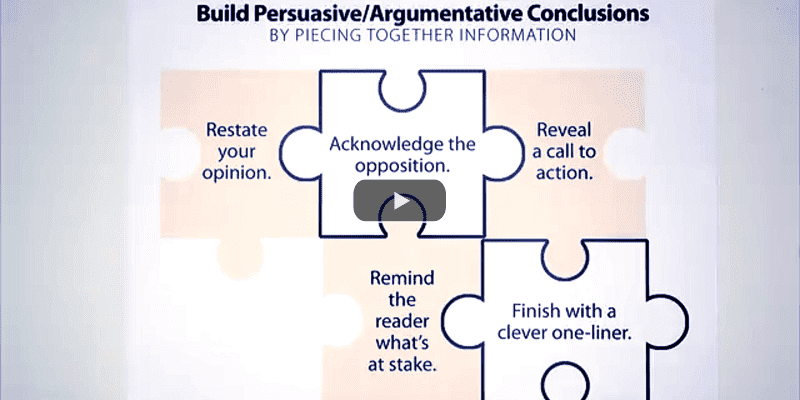Learning Center
writing
Organize persuasive writing using What & Why
january 9, 2024
The basic organization of all persuasive writing is the same. Regardless if it’s a movie review or a book recommendation, a persuasive letter or an argumentative essay—all of these follow a consistent 2-part structure:
- WHAT I think (about a topic).
- WHY I think it.
PART 1: WHAT I think
Persuasive writing revolves around debatable topics. Instead of simply informing or entertaining, the writer attempts to convince the reader that something is good or bad, right or wrong, fair or unfair.
Consequently, the first paragraph(s) serves as the launchpad for this persuasive mission. The writer identifies his opinion, position, or claim on a debatable topic, setting the stage for the rest of the piece.
PART 2: WHY I think it
The body or middle of every persuasive piece consists of 3-5 reasons presented as body paragraphs.
Using the table analogy, explain that each reason is like the top of a table. However, stating a reason is just the starting point. Just as a table wobbles without enough legs to hold it up, persuasive reasons carry no weight without proof.
Support each “table top” reason with examples, statistics, quotes, and evidence. These “leg” sentences “hold up” each point, strengthening the writer’s overall claim with facts, logic, and emotion.
After introducing the WHAT-and-WHY organization of all persuasive writing, connect the two parts by adding a tablecloth to the graphic organizer (PDF | Google Slide standard or widescreen).
- WHAT I think | The writer’s claim acts like the tablecloth, draping over and unifying the reasons that follow.
- WHY I think it | The writer develops strong table-top reasons—each supported by sturdy “leg” evidence.
Graphic Organizer: PDF | Google Slide standard or widescreen


